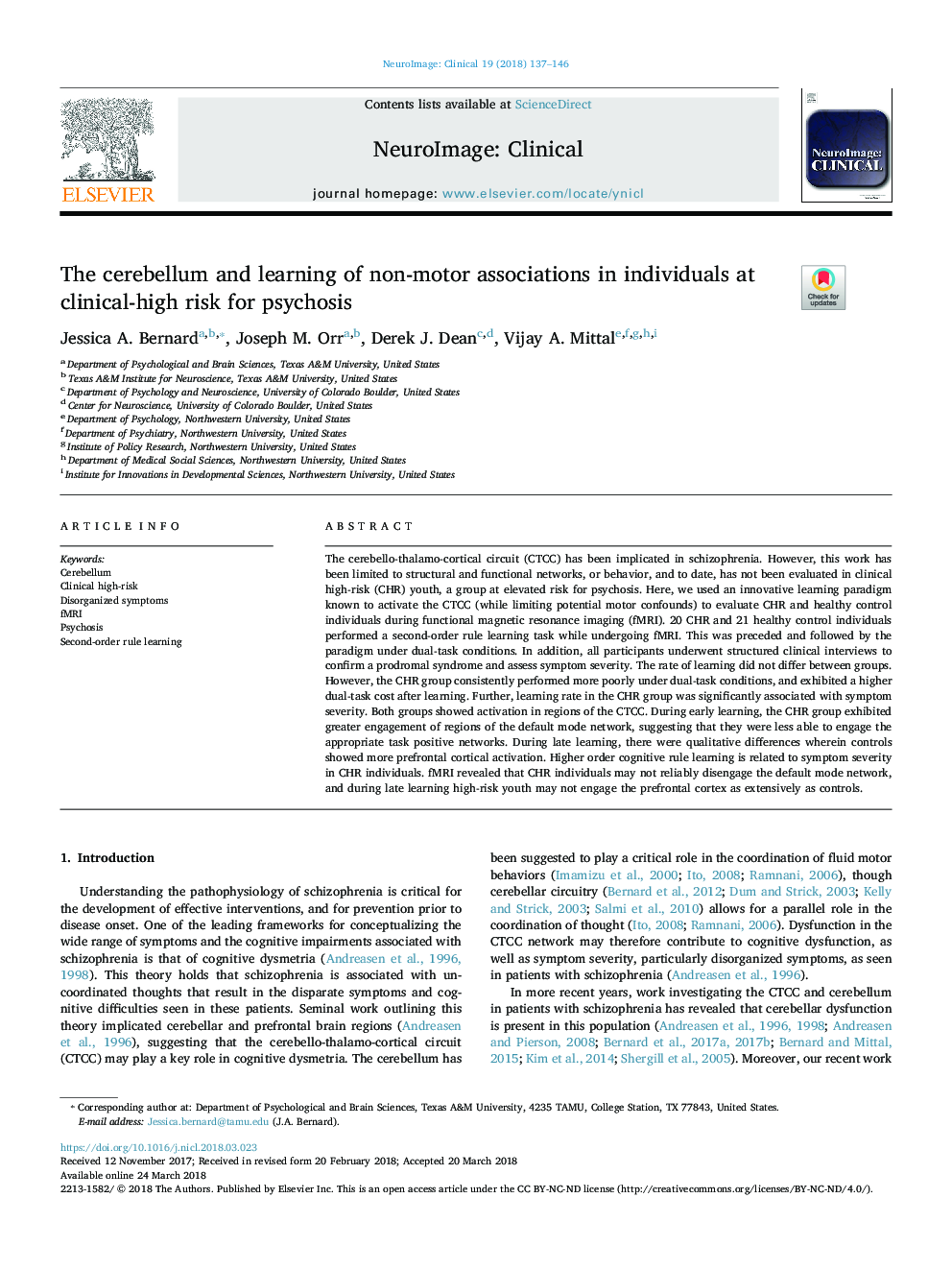| Article ID | Journal | Published Year | Pages | File Type |
|---|---|---|---|---|
| 8687599 | NeuroImage: Clinical | 2018 | 10 Pages |
Abstract
The cerebello-thalamo-cortical circuit (CTCC) has been implicated in schizophrenia. However, this work has been limited to structural and functional networks, or behavior, and to date, has not been evaluated in clinical high-risk (CHR) youth, a group at elevated risk for psychosis. Here, we used an innovative learning paradigm known to activate the CTCC (while limiting potential motor confounds) to evaluate CHR and healthy control individuals during functional magnetic resonance imaging (fMRI). 20 CHR and 21 healthy control individuals performed a second-order rule learning task while undergoing fMRI. This was preceded and followed by the paradigm under dual-task conditions. In addition, all participants underwent structured clinical interviews to confirm a prodromal syndrome and assess symptom severity. The rate of learning did not differ between groups. However, the CHR group consistently performed more poorly under dual-task conditions, and exhibited a higher dual-task cost after learning. Further, learning rate in the CHR group was significantly associated with symptom severity. Both groups showed activation in regions of the CTCC. During early learning, the CHR group exhibited greater engagement of regions of the default mode network, suggesting that they were less able to engage the appropriate task positive networks. During late learning, there were qualitative differences wherein controls showed more prefrontal cortical activation. Higher order cognitive rule learning is related to symptom severity in CHR individuals. fMRI revealed that CHR individuals may not reliably disengage the default mode network, and during late learning high-risk youth may not engage the prefrontal cortex as extensively as controls.
Related Topics
Life Sciences
Neuroscience
Biological Psychiatry
Authors
Jessica A. Bernard, Joseph M. Orr, Derek J. Dean, Vijay A. Mittal,
